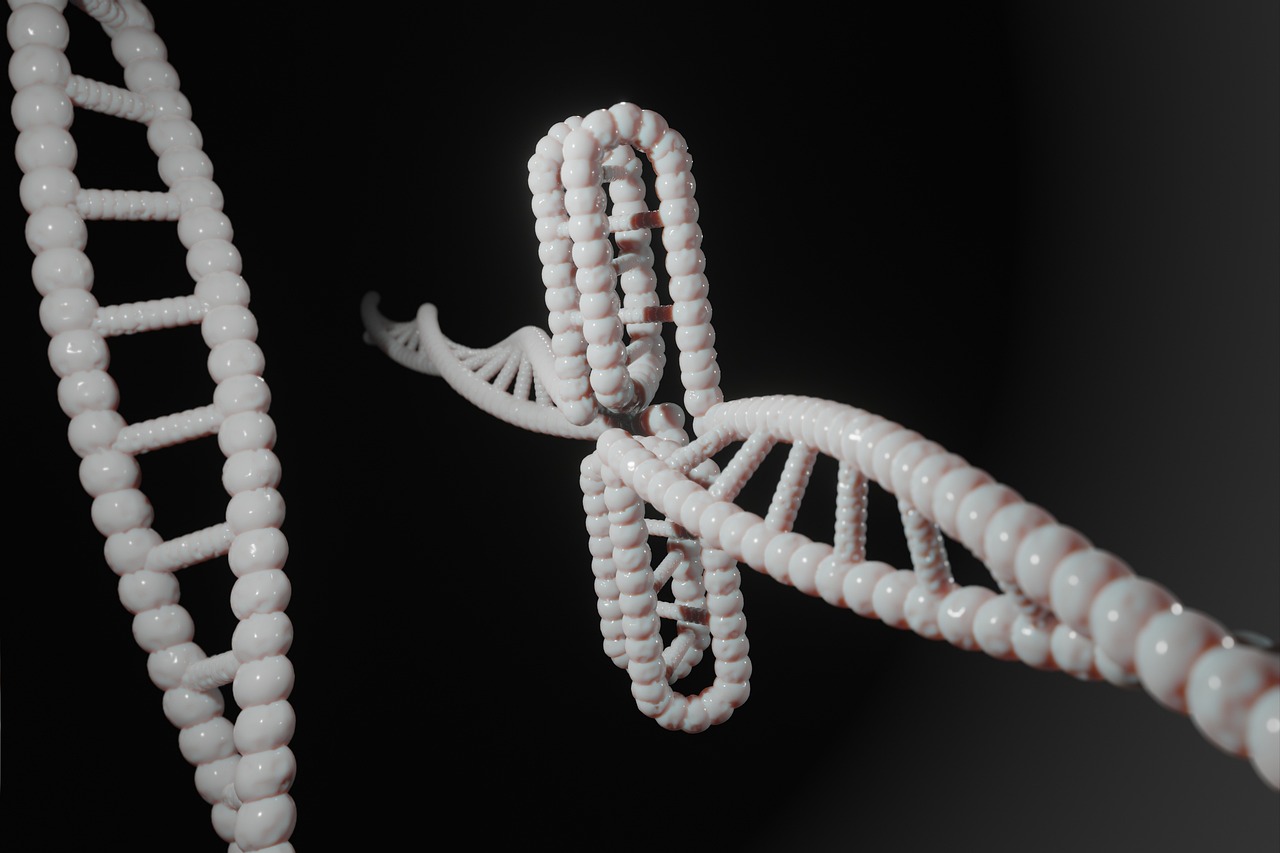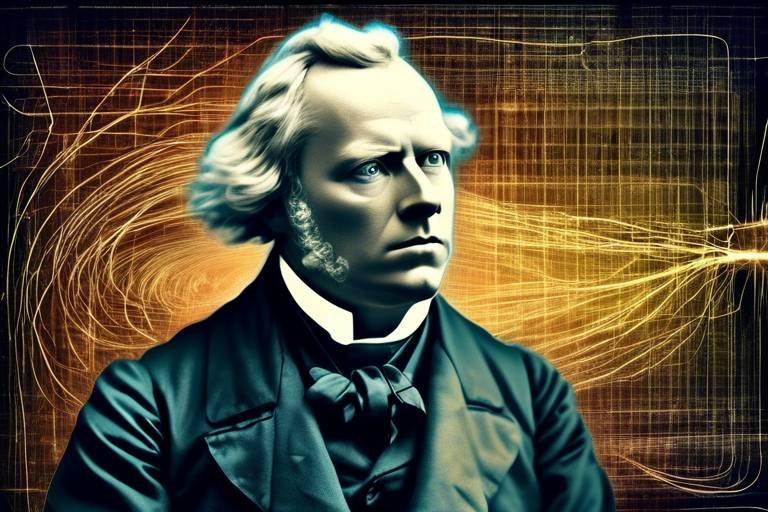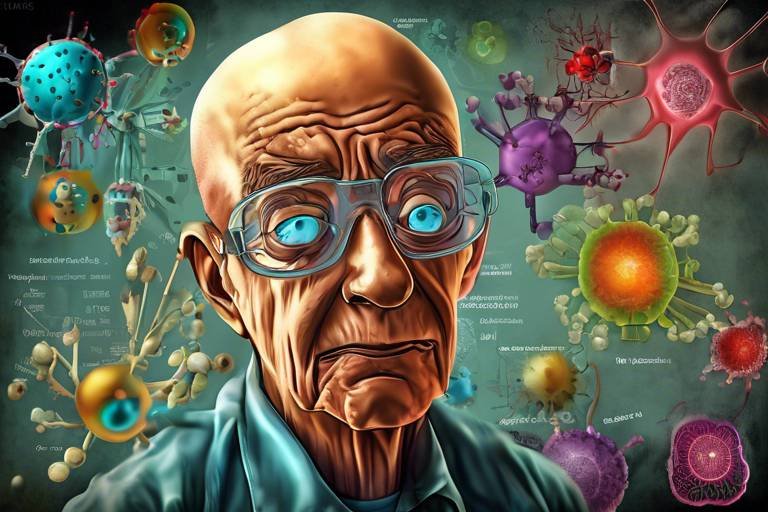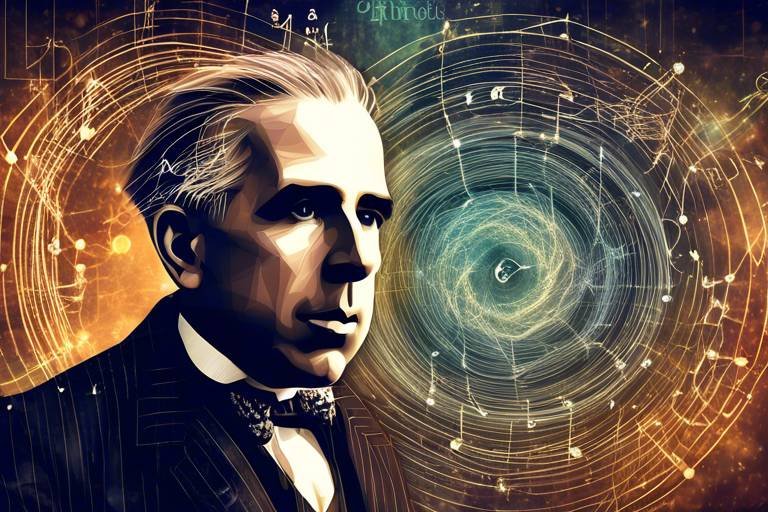The Discoveries of Oswald Avery in Genetics
Oswald Avery was a name that would eventually resonate through the corridors of scientific history, primarily due to his groundbreaking contributions to the field of genetics. His work in the early 20th century laid the foundation for our understanding of DNA as the hereditary material, a concept that revolutionized biology and medicine. Imagine a world where the intricate dance of genes was still a mystery; Avery stepped onto the stage and illuminated the path with his meticulous experiments and keen insights. His discoveries not only changed the course of genetics but also opened doors to advancements in biotechnology, medicine, and our understanding of life itself.
In a time when the scientific community was firmly rooted in the belief that proteins were the carriers of genetic information, Avery's bold assertions challenged the status quo. He embarked on a journey that would lead him to uncover the true nature of genetic material through his famous pneumococcus experiments. These experiments revealed that DNA, rather than proteins, was the true agent of heredity. Can you imagine the surprise that rippled through laboratories as this revelation unfolded? Avery's work was like a key that unlocked the door to molecular biology, allowing scientists to explore the very essence of life.
As we delve deeper into Avery's life and experiments, it becomes evident that his journey was not without its hurdles. The skepticism he faced from contemporaries was a testament to the revolutionary nature of his findings. Yet, through persistence and unwavering dedication, Avery defended his conclusions, ultimately earning a place in the annals of scientific achievement. His legacy continues to influence modern genetic research, reminding us that true innovation often comes from questioning established norms and daring to explore the unknown.
In this article, we will explore the various facets of Oswald Avery's contributions to genetics, from his early life and education to the profound implications of his discoveries. Join us as we unravel the story of a scientist whose work transformed our understanding of DNA and heredity, leaving an indelible mark on the world of biology.

Avery's Early Life and Education
Oswald Avery was born on October 21, 1877, in Halifax, Nova Scotia, Canada. Growing up in a family that valued education, he was influenced by his parents' dedication to learning. His father, a minister, and his mother, a schoolteacher, instilled in him a strong work ethic and a curiosity about the world around him. This foundation set the stage for his future endeavors in the sciences. Avery's early education began at a local school, where he exhibited a keen interest in biology and chemistry, subjects that would later become central to his groundbreaking research.
After completing high school, Avery pursued higher education at Columbia University in New York City. Enrolling in 1896, he initially focused on studying medicine. However, his fascination with the scientific aspects of biology led him to shift his focus towards bacteriology. This change would prove pivotal, as it was in the realm of bacteriology that he would make his most significant contributions. Avery earned his bachelor's degree in 1900 and continued his studies, ultimately receiving his medical degree in 1906.
During his time at Columbia, Avery was influenced by several prominent scientists, including William H. Welch, a leading figure in the field of pathology. Welch's mentorship encouraged Avery to delve deeper into research, sparking a passion for experimentation that would define his career. After completing his medical training, Avery joined the Rockefeller Institute for Medical Research, where he would embark on the experiments that would change the landscape of genetics forever.
Throughout his academic journey, Avery developed a reputation for his meticulous approach to research. He was known for his ability to think critically and approach problems with a unique perspective. His early work focused on the study of pneumonia and the bacteria responsible for it, laying the groundwork for his later discoveries regarding DNA. Avery's educational background and early influences were crucial in shaping his scientific philosophy, emphasizing the importance of rigorous experimentation and a willingness to challenge established beliefs.
In summary, Oswald Avery's early life and education were marked by a strong foundation in the sciences, a passion for research, and the influence of notable mentors. These elements combined to prepare him for the groundbreaking work he would accomplish in genetics, ultimately leading to his identification of DNA as the genetic material responsible for heredity.

The Pneumococcus Experiment
Oswald Avery's Pneumococcus Experiment stands as a monumental milestone in the field of genetics, marking a pivotal moment when science began to unravel the mysteries of DNA. This experiment, conducted in the early 1940s, focused on the bacterium Streptococcus pneumoniae, commonly known as pneumococcus. At that time, the scientific community was captivated by the idea that some biological material could transform one organism into another. Avery sought to clarify this enigma, and what he discovered would forever alter our understanding of heredity and genetic material.
Avery and his team were particularly interested in a strain of pneumococcus that was virulent, meaning it could cause disease, and a non-virulent strain that was harmless. The crux of the experiment involved taking heat-killed virulent bacteria and mixing them with live non-virulent bacteria. To the astonishment of the researchers, the non-virulent bacteria transformed into virulent forms. This transformation raised a critical question: what was responsible for this change? Was it a protein, a carbohydrate, or perhaps something else entirely?
To answer this question, Avery meticulously isolated various components of the heat-killed virulent bacteria. Through a series of complex biochemical processes, he eliminated proteins and carbohydrates, leaving behind only the nucleic acids, which we now know as DNA. The results were astounding: when he introduced this purified DNA to the non-virulent bacteria, they transformed into virulent ones. This was the moment when Avery concluded that DNA was the transforming principle—the very essence of genetic information. His findings were revolutionary, suggesting that DNA was not just a structural component of cells but the fundamental carrier of genetic information.
The implications of Avery's experiment were profound. It challenged the prevailing belief that proteins were the primary molecules of heredity. This was a time when many scientists still clung to the idea that proteins were the building blocks of life, and here was Avery, presenting evidence that DNA held the key to genetic transformation. His meticulous methodology and unwavering dedication to scientific inquiry not only solidified his findings but also set the stage for future research in molecular biology.
In summary, the Pneumococcus Experiment conducted by Oswald Avery was not merely an isolated study; it was a groundbreaking exploration that unveiled the crucial role of DNA in heredity. His work laid the groundwork for subsequent discoveries in genetics and molecular biology, leading to the understanding that DNA is the blueprint of life itself. Avery's experiments were a testament to the power of scientific inquiry and the relentless pursuit of knowledge, leaving a legacy that continues to influence modern genetics.
- What was the main discovery of Avery's Pneumococcus Experiment?
Avery discovered that DNA is the transforming principle responsible for genetic transformation in bacteria. - Why was Avery's work initially met with skepticism?
Many scientists at the time believed proteins were the primary carriers of genetic information, making Avery's findings controversial. - How did Avery's experiment impact future research in genetics?
His work paved the way for the identification of DNA as the genetic material, influencing countless studies in molecular biology.

The Role of DNA in Transformation
Oswald Avery's groundbreaking experiments revealed a stunning truth: DNA is the fundamental genetic material responsible for transformation in living organisms. Before Avery's work, the scientific community was largely unaware of the specific role DNA played in heredity. His research was like opening a Pandora's box, unleashing a cascade of discoveries that would change our understanding of biology forever. Imagine a world where the blueprint of life was hidden in plain sight, waiting for someone to uncover its secrets. That someone was Avery.
Avery's experiments focused on the pneumococcus bacteria, specifically two strains: the virulent strain, which caused disease, and the non-virulent strain, which did not. By observing how these strains interacted, he was able to demonstrate that the virulent strain could transform the non-virulent strain into a deadly form. This transformation was not just a coincidence; it was a clear indication that something was being transferred between the bacteria. But what was this mysterious substance?
Through meticulous experimentation, Avery and his team isolated the transforming principle. They used a variety of techniques, including heat treatment and enzymatic degradation, to pinpoint that the substance responsible for this transformation was indeed DNA. This was a pivotal moment in science, akin to discovering the missing piece of a jigsaw puzzle that suddenly makes the entire picture clear. Avery's conclusion was both revolutionary and controversial, as it challenged the prevailing belief that proteins were the primary carriers of genetic information.
The implications of Avery's findings were profound. They not only established DNA as the hereditary material but also paved the way for future research in genetics. As scientists began to grasp the significance of DNA, they started to explore its structure, function, and the mechanisms by which it governs life. Avery's work effectively laid the groundwork for the field of molecular biology, highlighting the importance of DNA in the processes of life.
To further illustrate the role of DNA in transformation, consider the following key points:
- Transformation Process: The uptake of DNA from the environment by a bacterial cell, leading to a change in its genotype and phenotype.
- Genetic Information: DNA carries the instructions for building proteins, which are essential for cellular functions.
- Experimental Validation: Avery's use of enzymes to degrade proteins and RNA, confirming that only DNA could induce transformation.
In essence, Avery's work illuminated the path toward understanding how traits are inherited and expressed. His assertion that DNA is the transforming principle not only reshaped the landscape of genetics but also sparked a flurry of research that continues to this day. The realization that DNA is the molecule of heredity has led to remarkable advancements, from the discovery of the double helix structure by Watson and Crick to the development of genetic engineering techniques that have revolutionized medicine and agriculture.
In summary, Oswald Avery's experiments were a turning point in the study of genetics. By demonstrating that DNA is the key player in transformation, he opened the door to a new era of scientific inquiry that has had lasting implications for our understanding of life itself.

Methodology of Avery's Experiments
Oswald Avery's experiments were nothing short of revolutionary, employing a meticulous methodology that was ahead of his time. At the heart of his work was the quest to identify the transforming principle responsible for genetic inheritance. This journey began with the use of Streptococcus pneumoniae, a bacterium that causes pneumonia. Avery and his team meticulously cultured different strains of this bacterium, distinguishing between virulent strains, which caused disease, and non-virulent strains, which did not.
One of the key aspects of Avery's methodology was his innovative approach to isolating the genetic material. He utilized a series of purification techniques, including filtration and centrifugation, to separate the polysaccharide capsule of the virulent strain from the cellular components. This was a significant step because it allowed him to focus specifically on the component he suspected was responsible for transformation.
After isolating the polysaccharide, Avery used various enzymes to systematically degrade the different components of the bacterial cells. This included:
- Proteases: To eliminate proteins, ensuring they were not the transforming principle.
- RNase: To break down RNA, ruling out the possibility that RNA could carry genetic information.
- DNase: To destroy DNA, which was the final test to see if it was indeed the transforming factor.
Through a series of controlled experiments, Avery discovered that only when DNA was present did the non-virulent bacteria transform into virulent forms. This groundbreaking finding led him to conclude that DNA was the transforming principle. His experiments were carefully documented and included rigorous controls to ensure that the results were reliable and reproducible.
Avery's work did not stop at merely identifying DNA as the genetic material; he also explored the implications of his findings. By demonstrating that DNA could transfer genetic traits from one bacterial strain to another, he laid the groundwork for understanding heredity at a molecular level. His methodology was groundbreaking and set a precedent for future research in genetics, paving the way for molecular biology as we know it today.
In summary, Avery's experiments were characterized by a combination of innovative techniques and rigorous scientific inquiry. His ability to isolate and identify DNA as the key player in genetic transformation was a monumental leap forward in the field of genetics, fundamentally changing how scientists understood heredity and molecular biology.
- What were Oswald Avery's main contributions to genetics?
Avery is best known for his discovery that DNA is the transforming principle responsible for genetic inheritance, fundamentally changing our understanding of genetics. - How did Avery conduct his experiments?
He used Streptococcus pneumoniae bacteria and employed purification techniques, such as filtration and centrifugation, to isolate DNA and test its role in transformation. - What impact did Avery's work have on modern biology?
Avery's findings laid the groundwork for the field of molecular biology and opened the door for further research into DNA and genetics.

Implications of the Findings
The implications of Oswald Avery's groundbreaking discoveries were nothing short of revolutionary, fundamentally altering our understanding of genetics and heredity. At a time when the scientific community was still largely debating the nature of genetic material, Avery's work provided compelling evidence that DNA was not just a passive component of cells but the very essence of genetic information. This was a profound realization that paved the way for numerous advancements in both genetics and molecular biology.
One of the most significant implications of Avery's findings was the shift in focus from proteins to nucleic acids as the primary carriers of genetic information. Before Avery, many scientists believed that proteins, due to their complexity and variability, were the key players in heredity. However, Avery's experiments demonstrated that it was, in fact, the simpler molecule—DNA—that held the instructions for life. This paradigm shift prompted researchers to delve deeper into the structure and function of DNA, leading to the discovery of its double-helix structure by Watson and Crick just a few years later.
Moreover, Avery's work laid the groundwork for the field of molecular biology. His identification of DNA as the transforming principle not only influenced genetic research but also opened the door to various biotechnological applications. Today, techniques such as gene cloning, genetic engineering, and the development of recombinant DNA technology can trace their roots back to the foundational principles established by Avery. These advancements have had profound implications for medicine, agriculture, and even forensic science.
In addition to these scientific advancements, Avery's findings also raised ethical questions about the manipulation of genetic material. As scientists began to understand how DNA could be altered and transferred between organisms, discussions around the implications of such technologies in areas like genetic modification and gene therapy gained momentum. The ability to edit genes has the potential to cure genetic diseases, enhance agricultural productivity, and even combat climate change, but it also brings forth concerns regarding bioethics, biodiversity, and the unforeseen consequences of altering life at a fundamental level.
To summarize, Oswald Avery's discoveries had far-reaching implications that transcended the laboratory. They not only reshaped our understanding of genetics but also catalyzed a series of innovations that continue to impact various fields today. His legacy is a testament to the power of scientific inquiry and the importance of challenging established beliefs in the quest for knowledge.

Challenges and Controversies
Oswald Avery's groundbreaking discoveries did not come without their fair share of . In the early 20th century, the scientific community was still grappling with the fundamental question of what constituted genetic material. While many researchers were focused on proteins as the carriers of heredity, Avery boldly shifted the spotlight to DNA. This was not merely a scientific debate; it was a clash of paradigms.
When Avery published his findings in 1944, he faced immediate skepticism from prominent scientists who were entrenched in the belief that proteins held the key to genetic information. The prevailing thought was that complex molecules like proteins, with their intricate structures and diverse functions, were more likely to carry the blueprints of life. In contrast, DNA was perceived as a simple molecule, lacking the complexity required for such a critical role. This led to a significant amount of pushback against Avery's conclusions.
Despite the overwhelming evidence he presented, including meticulous experiments that demonstrated DNA's role in transformation, the scientific community remained hesitant to accept his claims. Some researchers even dismissed his work as an anomaly, arguing that his results could be attributed to experimental error or contamination. Avery's response was one of resilience; he continued to defend his findings, often reiterating the importance of rigorous scientific methodology and the need for open-mindedness in research.
One of the most notable criticisms came from a prominent microbiologist who argued that Avery's experiments could not conclusively prove that DNA was the genetic material. This skepticism was compounded by the fact that many scientists were still trying to understand the implications of DNA's structure, which had not yet been elucidated. In this environment of doubt, Avery's work was often overshadowed by the prevailing focus on other areas of genetics, making it difficult for him to gain the recognition he deserved.
However, as time passed and further research confirmed Avery's findings, the tide began to turn. The eventual discovery of the double helix structure of DNA by Watson and Crick in 1953 provided the missing piece of the puzzle, validating Avery's claims and solidifying the role of DNA as the cornerstone of genetics. This shift not only vindicated Avery but also highlighted the importance of his work in laying the groundwork for future discoveries in molecular biology.
In retrospect, the challenges and controversies surrounding Avery's research serve as a reminder of the dynamic nature of scientific inquiry. His perseverance in the face of skepticism ultimately paved the way for a deeper understanding of genetics, demonstrating that sometimes, the most revolutionary ideas face the greatest resistance. Avery's legacy is a testament to the importance of questioning established norms and the necessity of scientific exploration, even when it goes against the grain.
- What was Oswald Avery's main contribution to genetics?
Avery's main contribution was the identification of DNA as the transforming principle responsible for heredity, fundamentally changing our understanding of genetic material. - Why was Avery's work initially met with skepticism?
Many scientists believed proteins were the carriers of genetic information, and Avery's focus on DNA was seen as unconventional and lacking sufficient evidence at the time. - How did Avery defend his findings?
Avery defended his work by emphasizing the rigorous methodology of his experiments and the importance of open-mindedness in scientific research. - What impact did Avery's discoveries have on modern science?
His discoveries laid the groundwork for future research in molecular biology, influencing fields such as genetics, biotechnology, and medicine.

The Impact on Molecular Biology
Oswald Avery's groundbreaking discoveries in the early 20th century fundamentally reshaped the landscape of molecular biology. Before Avery's work, the scientific community was largely unaware of the critical role that DNA played in heredity and genetic transformation. His experiments with pneumococcus bacteria not only identified DNA as the transforming principle but also opened the door to an entirely new understanding of genetics.
One of the most significant impacts of Avery's findings was the shift in focus from proteins to nucleic acids as the carriers of genetic information. This was a radical departure from the prevailing belief that proteins were the primary molecules responsible for heredity. Avery's work laid the foundation for future research that would explore the structure and function of DNA, leading to the discovery of the double helix by Watson and Crick in 1953. Without Avery's pioneering experiments, the journey to understanding the molecular basis of life might have taken much longer.
Moreover, Avery's research had profound implications for various fields, including biotechnology, medicine, and forensic science. Here are a few key areas where his work has made a lasting impact:
- Genetic Engineering: Avery's identification of DNA as the genetic material paved the way for techniques such as recombinant DNA technology, which allows scientists to manipulate genes for various applications, including gene therapy and agricultural improvements.
- Medical Research: Understanding the role of DNA in heredity has been crucial in studying genetic diseases, leading to advancements in diagnostics and treatments.
- Forensic Science: The principles derived from Avery's work have been applied in forensic science, enabling the use of DNA profiling in criminal investigations and paternity tests.
Avery's contributions also encouraged a more interdisciplinary approach to biological research, merging genetics with molecular biology, biochemistry, and bioinformatics. This integration has led to the emergence of new fields such as genomics and proteomics, which have transformed our understanding of biological processes at the molecular level.
In summary, the impact of Oswald Avery's research on molecular biology cannot be overstated. His identification of DNA as the genetic material has not only altered the course of genetics but has also catalyzed advancements in numerous scientific disciplines. The ripple effects of his discoveries continue to influence modern science, shaping our understanding of life itself.
- What was Oswald Avery's major contribution to genetics?
Avery's major contribution was identifying DNA as the transforming principle, demonstrating that it carries genetic information. - How did Avery's work influence modern biotechnology?
His discoveries laid the groundwork for genetic engineering, allowing scientists to manipulate DNA for various applications. - What challenges did Avery face in his research?
Avery encountered skepticism from the scientific community, as many believed proteins were the primary genetic material.

Legacy of Oswald Avery
Oswald Avery's legacy is nothing short of monumental in the realm of genetics and molecular biology. His pioneering work in identifying DNA as the transforming principle fundamentally shifted the scientific paradigm, paving the way for future breakthroughs in genetic research. Imagine a world where the very blueprint of life was still shrouded in mystery; Avery's contributions illuminated this path, allowing scientists to unravel the complexities of heredity and genetic inheritance.
Today, Avery is often celebrated as one of the founding figures in molecular genetics. His experiments with pneumococcus bacteria not only established DNA as the carrier of genetic information but also opened up new avenues for understanding genetic diseases, evolution, and biotechnology. In essence, he laid the groundwork for what would become a flourishing field of study, influencing countless researchers and practitioners who followed in his footsteps.
One of the most profound impacts of Avery's work is seen in the field of biotechnology. Techniques such as genetic engineering, CRISPR, and gene therapy owe their existence to the foundational insights provided by Avery. For instance, the ability to manipulate DNA has led to groundbreaking advancements in medicine, agriculture, and environmental science. The implications of his discoveries are still rippling through the scientific community, much like a stone thrown into a pond creates waves that spread far and wide.
Moreover, Avery's legacy extends beyond the laboratory. His work has inspired generations of scientists to pursue careers in genetics, molecular biology, and related fields. Educational institutions worldwide recognize his contributions through various programs and research initiatives. To highlight his enduring influence, many universities have established scholarships and awards in his name, ensuring that future scientists are encouraged to push the boundaries of knowledge just as he did.
In addition to his scientific contributions, Avery's story serves as a reminder of the importance of perseverance in the face of skepticism. Despite initial resistance from the scientific community, he remained steadfast in his convictions. This aspect of his legacy is particularly inspiring for young scientists today, who may encounter challenges in their own research journeys. Avery's determination exemplifies how critical it is to stand by one's findings and the pursuit of truth, no matter the obstacles.
In summary, Oswald Avery's legacy is characterized by his groundbreaking discoveries that transformed our understanding of genetics. His work not only reshaped scientific thought but also fostered advancements that continue to benefit society today. As we delve deeper into the mysteries of life, it is essential to remember the trailblazers like Avery, whose insights and courage have illuminated the way for future generations.

Recognition and Awards
Oswald Avery's journey in the scientific realm was not without its share of challenges, yet the recognition he received later in life stands as a testament to the profound impact of his work. Initially, his groundbreaking discoveries about DNA and its role in heredity were met with skepticism and resistance from the scientific community. However, as more researchers began to validate his findings, the tide turned, and Avery's contributions were eventually celebrated.
Among the notable accolades he received, the Gairdner Foundation International Award in 1946 was particularly significant. This award recognized his pivotal role in establishing DNA as the genetic material, a concept that revolutionized biology. Furthermore, the National Medal of Science, awarded in 1960, highlighted his contributions to molecular biology and genetics, cementing his legacy in the scientific community.
In addition to these prestigious awards, Avery's work has been honored in various ways, including:
- The naming of several research institutes and laboratories in his honor.
- Numerous publications and articles that continue to reference his pioneering research.
- Posthumous recognition in the form of lectures and symposiums dedicated to his contributions.
Despite the initial controversies surrounding his research, Avery's legacy is now firmly entrenched in the annals of scientific history. His work laid the groundwork for future breakthroughs in genetics, molecular biology, and biotechnology, influencing countless researchers and shaping the direction of modern science. As we continue to explore the intricacies of DNA and heredity, Avery's name remains synonymous with innovation and discovery.
Q: What was Oswald Avery's most significant contribution to genetics?
A: Oswald Avery is best known for his discovery that DNA is the transforming principle responsible for genetic inheritance, fundamentally changing our understanding of genetics.
Q: Did Oswald Avery receive recognition during his lifetime?
A: Although he faced skepticism initially, Avery did receive recognition later in life, including notable awards such as the Gairdner Foundation International Award and the National Medal of Science.
Q: How has Avery's work influenced modern biology?
A: Avery's research paved the way for the field of molecular biology, influencing subsequent discoveries related to DNA, genetics, and biotechnology, which are crucial to contemporary scientific advancements.
Frequently Asked Questions
- What were Oswald Avery's main contributions to genetics?
Oswald Avery is best known for his groundbreaking work that identified DNA as the transforming principle in genetics. His experiments with pneumococcus bacteria demonstrated that DNA carries genetic information, fundamentally changing our understanding of heredity.
- How did Avery's pneumococcus experiment work?
Avery's experiment involved isolating different components of the pneumococcus bacteria to determine which one was responsible for transformation. He found that when DNA from a virulent strain was introduced to a non-virulent strain, the latter became virulent, proving that DNA was the genetic material.
- What challenges did Avery face in his research?
Avery encountered skepticism from the scientific community, as many scientists at the time believed that proteins were the primary carriers of genetic information. He faced significant criticism and had to defend his findings against established beliefs, which made his work even more pivotal.
- What is the significance of Avery's findings in modern biology?
Avery's discoveries laid the groundwork for modern molecular biology, influencing research in genetics, biotechnology, and the understanding of DNA's role in heredity. His work is considered a cornerstone in the field, impacting everything from genetic engineering to the study of hereditary diseases.
- How is Avery's legacy recognized today?
Oswald Avery's contributions are celebrated in the scientific community. He is often acknowledged as a pioneer in genetics, and his work continues to influence contemporary research. Various awards and honors have been established in his name, highlighting his impact on the field.
- Did Avery receive any awards for his work?
Yes, despite facing initial skepticism, Avery received several awards later in his life. His recognition grew as the significance of his contributions became more apparent, and he is now regarded as a key figure in the history of genetics.



















